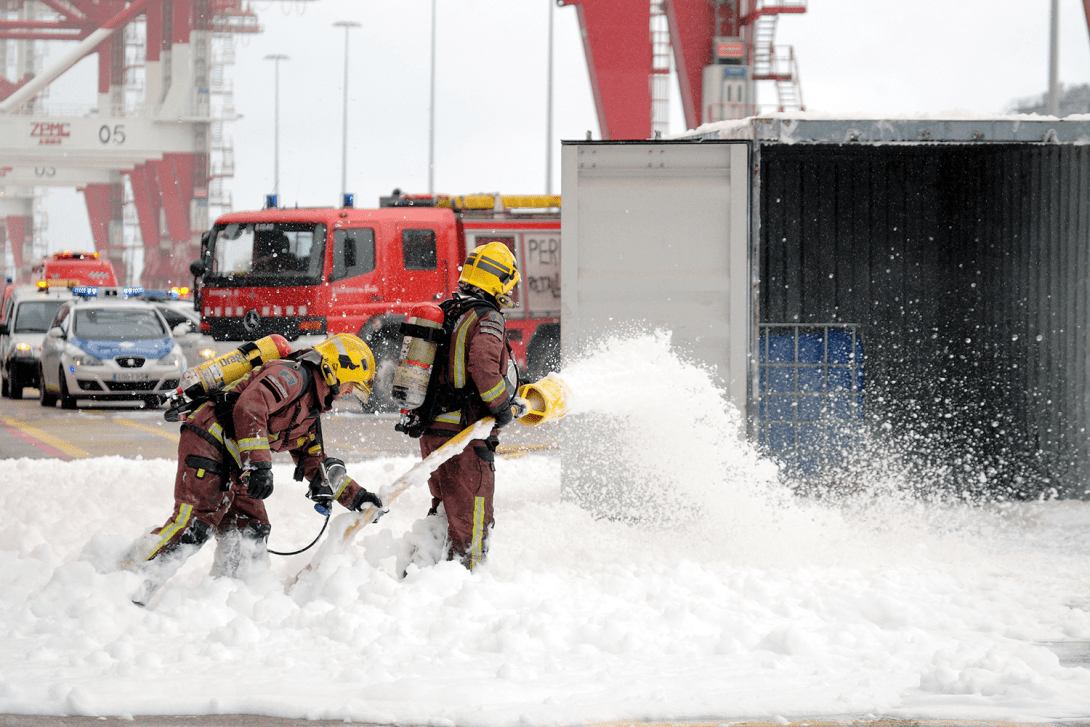Industrial Security
The Ports Law attributes to us the functions of controlling the systems against fires and prevention and emergencies according to the regulations on civil protection; collaborate with the competent administrations in the aforementioned areas, including rescue; and ensure compliance with the regulations that affect the admission, handling and storage of dangerous goods.
Prepare, prevent and act
The implementation of the Self-Protection Plan (PAU), one of the essential tools to guarantee the industrial safety of the Port of Barcelona, is carried out in different ways. General or specific training, information to workers or staff of the Port Community and the periodic performance of drills, practices or exercises are the main ones.

Drills and practices
All activities affected by Decree 30/2015, except those of a temporary nature, are obliged to carry out simulations of the activation of the Self-Protection Plan (PAU) at least once a year. These exercises help us to verify the operability of the plan and define the improvement measures that are derived.
The purpose of a drill within the framework of the PAU is:
- Achieve the coordination of the organisations, facilities and ships involved.
- Put into practice the activation and action of material and human resources.
- Improve emergency procedures.
Drills and practices are coordinated by the APB Industrial Safety department and have the active participation of groups acting of the PAU of the port. The following usually take place:
- General drill of the Port of Barcelona.
- Drills in the companies of the Port of Barcelona.
- Joint practices between Bombers de Barcelona and Tugboats from the port.
- Joint practices between the Barcelona Fire Brigade and the Estibarna Emergency Brigade.
Specific training


Admission of dangerous goods
The admission, handling and storage of dangerous goods in ports is regulated by RD 145/89 and article 15 is dedicated to those of special danger. The International Maritime Dangerous Goods Code (IMDG Code), of the International Maritime Organisation (IMO), includes the current provisions that regulate the transport of dangerous goods by sea and in chapter 1.4.3.1 high-risk ones are defined.
The APB's Industrial Safety Department takes the pertinent steps to issue the essential permit to load or unload this type of goods in the port. In addition, in situ inspections are regularly carried out at container and bulk stowage terminals, as well as documentary inspections of consignees. Dangerous goods represent around 20% of the total volume of port traffic.
Risk Prevention Group (GPR)
The PAU contemplates the presence and performance of the Barcelona Fire Brigade as GPR in loading or unloading operations of high-risk dangerous goods at the different stowage terminals. This is intended to ensure rapid intervention in the event of any incident or accident, since the reduction in response time significantly minimises possible consequences.







